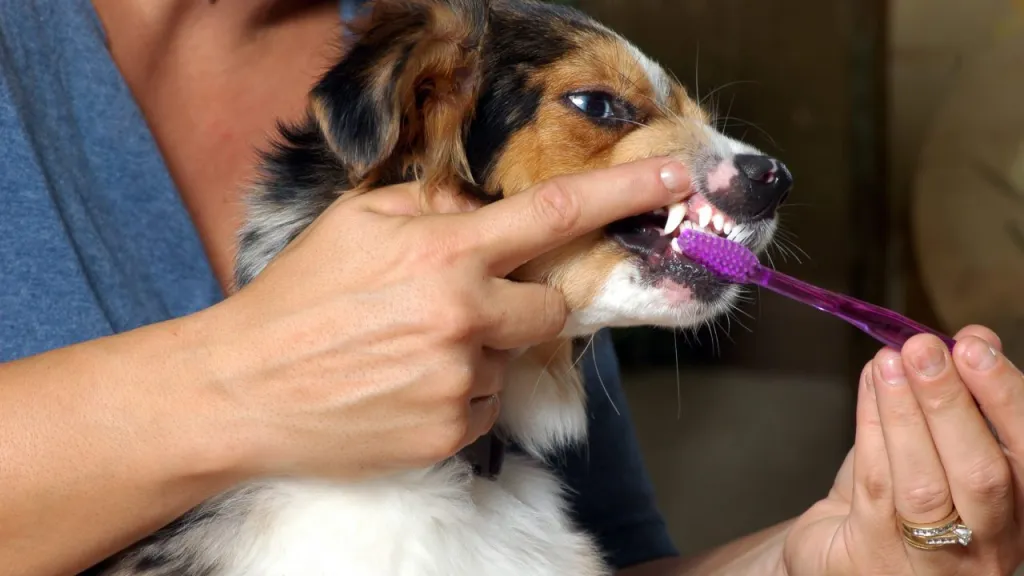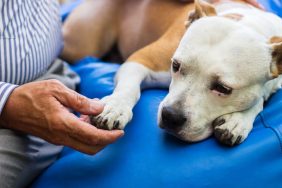We all know how important it is for us humans to brush our teeth daily for good health, clean teeth, and fresh breath. But did you know cleaning your dog’s teeth is just as beneficial?
In addition to taking your pup in for an annual dental examination with your veterinarian, a home brushing program will keep your dog healthy and happy. You can begin this habit with your dog at any age.
How to get started
So how do you begin? The first step is to get your dog used to you working in their mouth. You can start by dipping your finger in a pet-safe toothpaste or treat paste and rubbing it gently along their teeth and gums.
Next, add a gauze pad on the tip of your finger. Place your hand on top of your dog’s muzzle, and pull their lip up on one side while gently squeezing to keep the mouth open. Carefully tilt their head back and brush the teeth on the opposite side of where you are holding. Always focus first and foremost on the gum line, since this is where bacteria can hide and cause plaque and periodontal disease. Work from the front to back of the mouth and from the upper to the lower teeth, always moving in a gentle, circular motion.
After you and your dog have the gauze routine down pat, you can introduce a toothbrush. Select one that is specially designed for dogs, or choose a human model with very soft bristles. Hold the brush at a 45-degree angle along the gum line, and move in an oval motion around the teeth.
Brushing should not take you any longer than a minute or two to complete. It is important to keep these sessions brief and finish with plenty of positive reinforcement. A special treat given after every brushing session can help encourage your dog to sit through future ones. It’s also important to remember to never use toothpaste made for people on your dog. Human toothpastes contain fluorides and artificial sugars such as xylitol which are toxic to your dog if swallowed.
Tooth-brushing tips
There are a few extra steps you can take to help keep your dog’s teeth clean in addition to brushing. Always feed your dog a dry food and hard biscuits that can be used as a mild abrasive against the teeth to keep plaque at bay.
It’s also a good idea to examine your dog’s mouth and teeth regularly for signs of periodontal disease. If you discover symptoms like red, swollen, or bleeding gums; chronic bad breath and brown coloring on the teeth; missing, broken, or loose teeth; or signs of infection like pus around the gum line or any type of growth in your dog’s mouth, contact your veterinarian right away.
Healthy teeth are a sign of a healthy dog. Do your part to keep your pup feeling their best with regular teeth brushing — you’ll both be happier for it.
Want some more tips on how to keep your dog looking and feeling their best? Check out some summertime grooming tips. Or, learn how to keep your dog’s nails trimmed.









